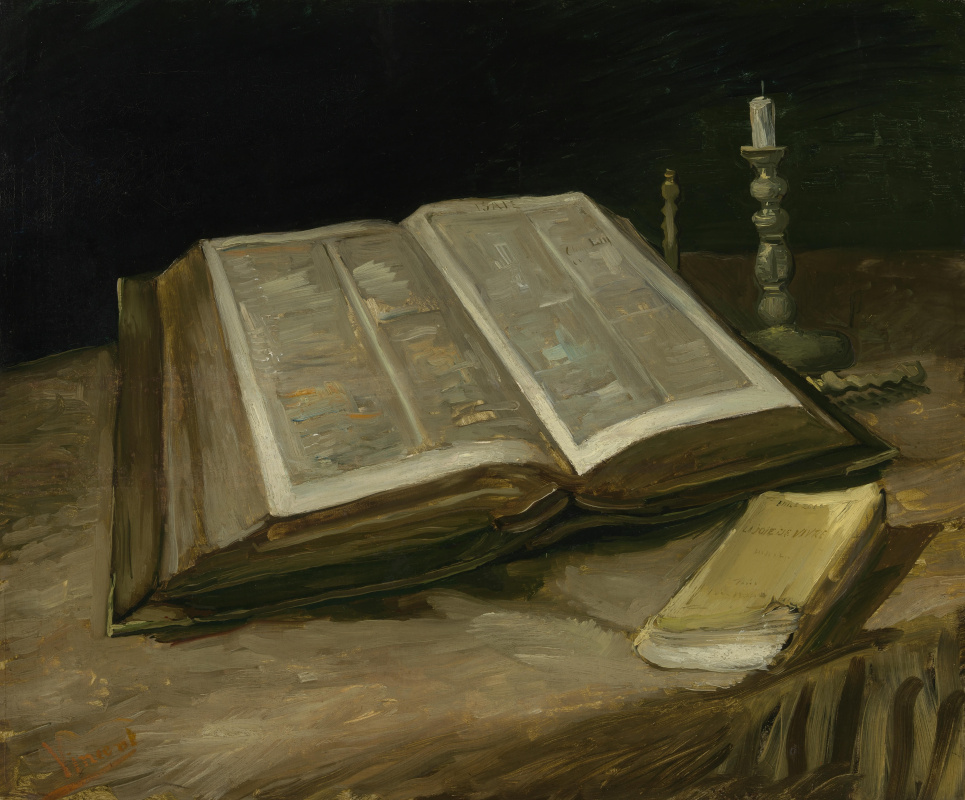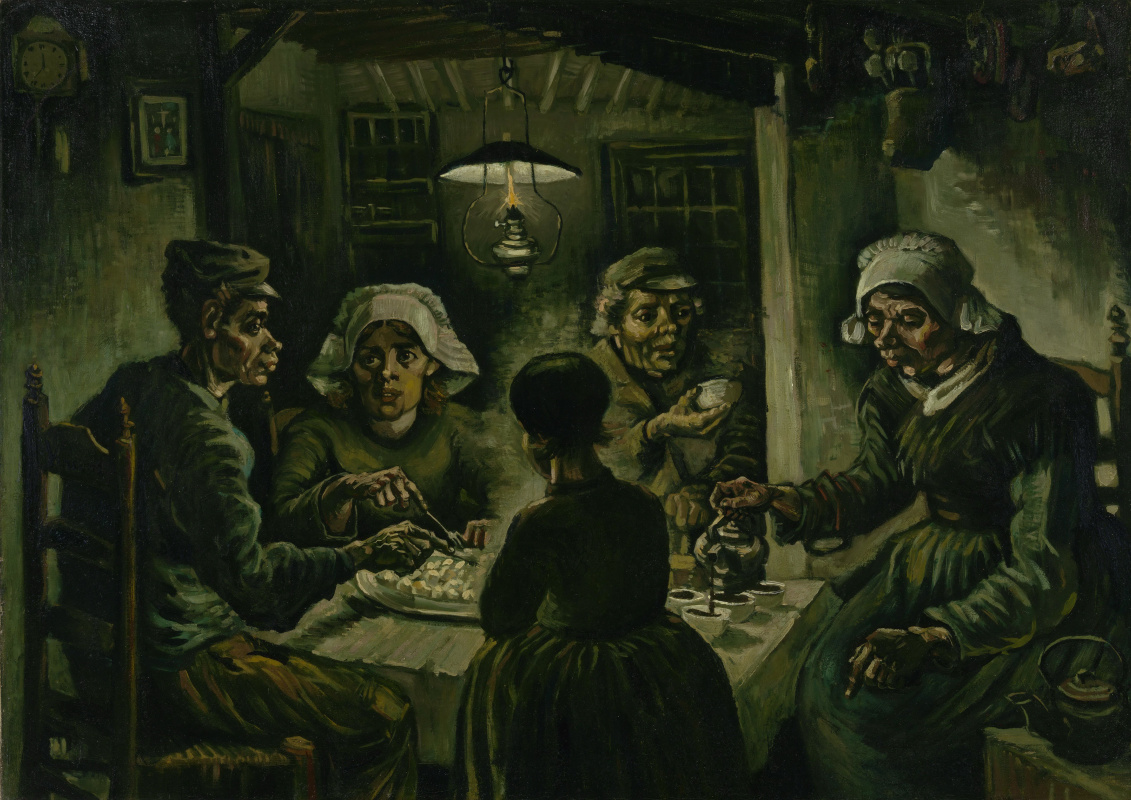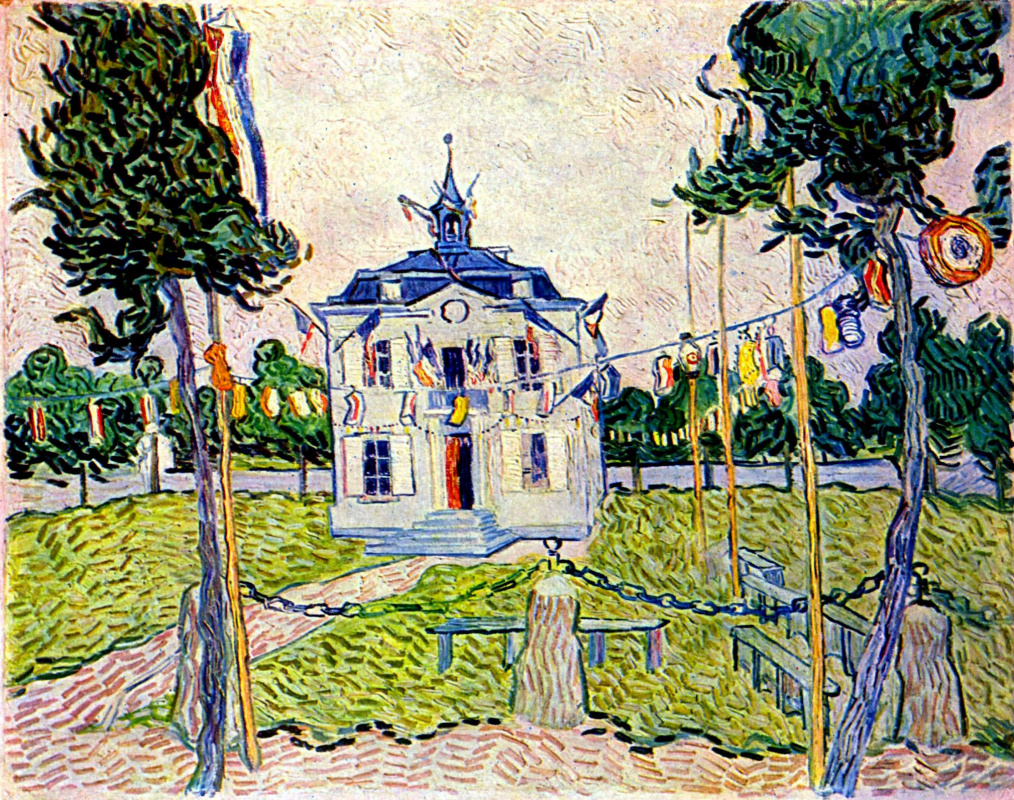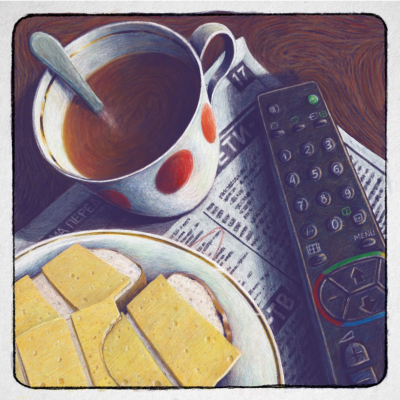Van Gogh did not like to study, though he had no problem with learning foreign languages. He adored his younger brother and conflicted with his father all his life. Regardless a numerous survived correspondence, a lot of secrets concerning his life still exist. The inquisitive biographers managed to throw discredit on his suicide.
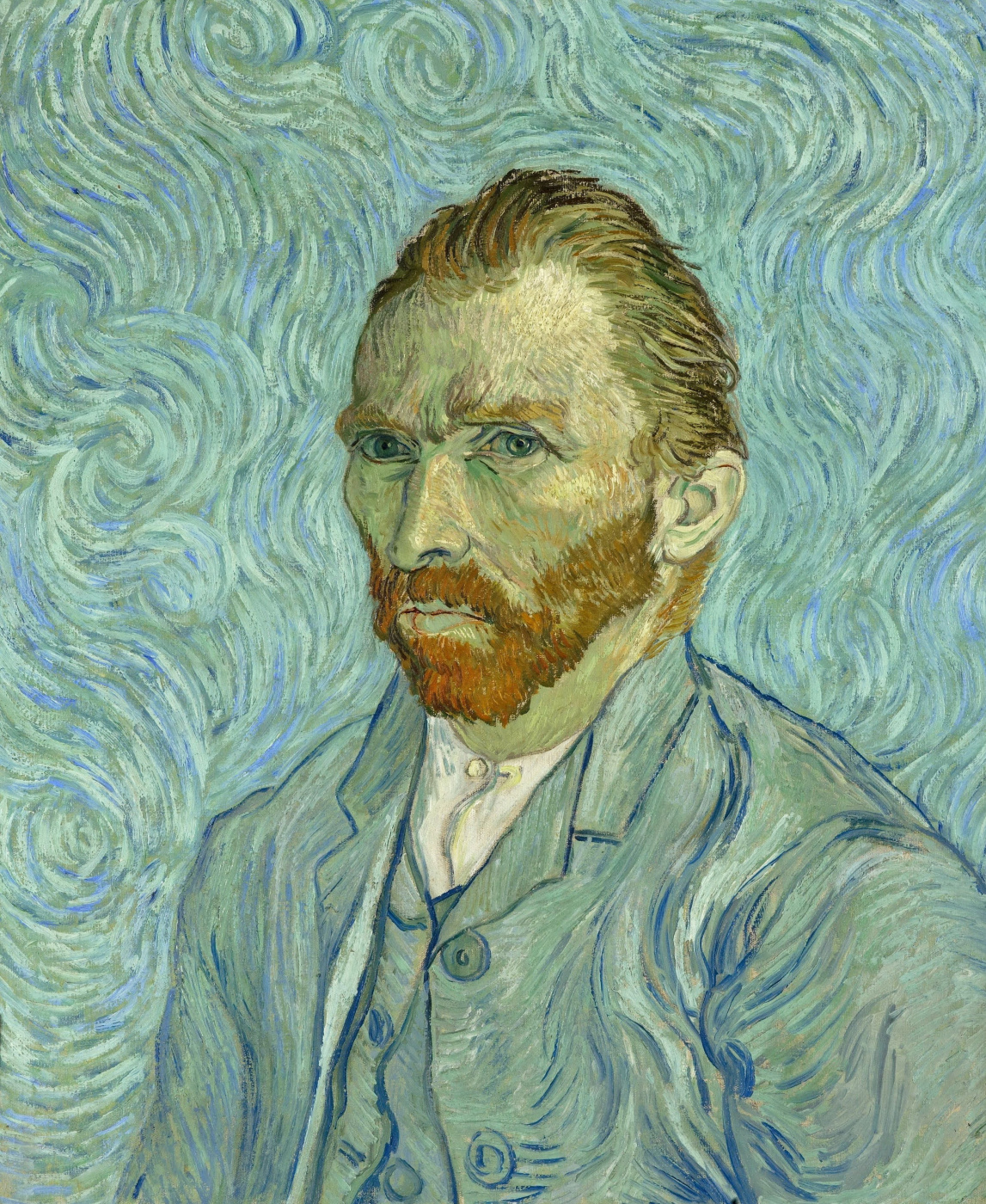
Still life with Bible
October 1885, 65.7×78.5 cm
Vincent van Gogh spoke four languages fluently. In May, 1873, the emerging artist came to London by sea. 20 year old young promising picture dealer was transferred to the Goupil’s London branch. In some weeks Vincent van Gogh read books by English authors in the original language. He liked Dickens most of all. He easily learnt at least two more European languages. After he had been fired from the Goupil’s Gallery in London, he taught writing, mathematics, French and German in a Methodist boys' school.
He had a serious intention to devote his life to the church and for a short period of time he took up a post as a missionary at an impoverished coal mine in the south of Belgium, a place where preachers were usually sent as punishment. His first sermon survived to nowadays was written and preached in perfect English. In 1877 van Gogh was dreaming about his missionary work though he had to work at a bookshop in Dordrecht and entertained himself translating the Bible in Dutch, German, French and English. After a year of studying diligently at the School of Theology in Amsterdam, he refused to learn Latin and Greek, calling these languages "dead languages" of poor people, he did not pass the exams and was subsequently denied entrance.
He had a serious intention to devote his life to the church and for a short period of time he took up a post as a missionary at an impoverished coal mine in the south of Belgium, a place where preachers were usually sent as punishment. His first sermon survived to nowadays was written and preached in perfect English. In 1877 van Gogh was dreaming about his missionary work though he had to work at a bookshop in Dordrecht and entertained himself translating the Bible in Dutch, German, French and English. After a year of studying diligently at the School of Theology in Amsterdam, he refused to learn Latin and Greek, calling these languages "dead languages" of poor people, he did not pass the exams and was subsequently denied entrance.
Plaster female torso
1888, 73×54 cm
Vincent van Gogh did not like schools and academies for artists. He hated carrying out somebody’s orders. He had his own curriculum and favorite subjects and models. In one of his letters to his brother Theo he wrote that the thing he hated at the academies was that teachers taught students how to paint portraits of Louis XV or the Arabs but not weavers, peasants or tailors. We could assume that Vincent entered the Academy of Fine Arts in Antwerp with a lot of free models for training of the painters and the emerging artist could spare some money. That time women of easy virtue served as models for the painter who was always in need of money though even in that case he had no chance to hire nude
models and had to pay extra sums for prostitutes who agreed to pose for him.
When a student at the Antwerp Academy Vincent traditionally wore a blue blouse and got into trouble with his teachers. His schoolmate recollected that once when van Gogh was required to draw the Venus of Milo during his drawing classes, he produced the limbless, naked torso of a Flemish peasant woman. His professor was shocked and started vigorously correcting that disgusting fruit of the student’s sick imagination. Vincent was outraged and shouted at him: "You clearly do not know what a young woman is like, God damn it! A woman must have hips, buttocks, a pelvis in which she can carry a baby!".
Van Gogh had spent less than two months in the Academy then left it and moved to Paris giving notice to nobody. He remained in the history of art as a talented self-taught artist.
When a student at the Antwerp Academy Vincent traditionally wore a blue blouse and got into trouble with his teachers. His schoolmate recollected that once when van Gogh was required to draw the Venus of Milo during his drawing classes, he produced the limbless, naked torso of a Flemish peasant woman. His professor was shocked and started vigorously correcting that disgusting fruit of the student’s sick imagination. Vincent was outraged and shouted at him: "You clearly do not know what a young woman is like, God damn it! A woman must have hips, buttocks, a pelvis in which she can carry a baby!".
Van Gogh had spent less than two months in the Academy then left it and moved to Paris giving notice to nobody. He remained in the history of art as a talented self-taught artist.
The potato eaters
May 1885, 81×114 cm
Vincent van Gogh had tense relationship with his father. The austere pastor of the Dutch Reformed Church in Holland, who devoted all his life to the God and his parish, could hardly be satisfied with his good-for-nothing first-born, who ignored all his duties and could leave his job any time and wander out obeying the voice of his heart. The relationship between his father and Vincent were more or less friendly only at the period when the soon-to be artist immersed himself in religion and decided to become a minister. Pastor Theodorus prepared his son entering the Amsterdam University to study theosophy though without any hope the undertaking would be successful.
Vincent’s relationships were also a cause of tension with his father after he learnt about his son’s love affair with a prostitute from the Hague. The artist tried to hide his relationship with Sien from the family, only his brother Theo knew about it. Vincent’s secret was disclosed by his former fellow workers. To keep the reputation of the family his father had nothing to do but to declare his son mentally unsound. He intended to put his son in a psychiatric hospital. Fortunately, matters didn’t come to that. The situation did not become better despite Vincent abandoned Sien. Driven by poverty and loneliness the artist went to live with his parents' house in Nuenen, though his relationship with a prostitute was rumored about the village. Vincent wrote to his brother that his parents had met him as though he had been a large scabby dog with dirty legs.
In March, 1885 pastor Theodorus van Gogh died. By that time the relations between father and son had been deteriorated insomuch as they did not speak with each other. Moreover, it was rumored that Vincent had something to do with his father’s death. Anyway, Vincent suffered greatly and felt guilty because of the death of his father. At the same time Theodorus' sudden death meant an opportunity for Vincent to get rid of his father’s pressure. Some days following the death of pastor Theodorus Vincent started painting his first masterpiece the Potato Eaters.
Vincent’s relationships were also a cause of tension with his father after he learnt about his son’s love affair with a prostitute from the Hague. The artist tried to hide his relationship with Sien from the family, only his brother Theo knew about it. Vincent’s secret was disclosed by his former fellow workers. To keep the reputation of the family his father had nothing to do but to declare his son mentally unsound. He intended to put his son in a psychiatric hospital. Fortunately, matters didn’t come to that. The situation did not become better despite Vincent abandoned Sien. Driven by poverty and loneliness the artist went to live with his parents' house in Nuenen, though his relationship with a prostitute was rumored about the village. Vincent wrote to his brother that his parents had met him as though he had been a large scabby dog with dirty legs.
In March, 1885 pastor Theodorus van Gogh died. By that time the relations between father and son had been deteriorated insomuch as they did not speak with each other. Moreover, it was rumored that Vincent had something to do with his father’s death. Anyway, Vincent suffered greatly and felt guilty because of the death of his father. At the same time Theodorus' sudden death meant an opportunity for Vincent to get rid of his father’s pressure. Some days following the death of pastor Theodorus Vincent started painting his first masterpiece the Potato Eaters.
Head of a peasant woman with white cap
April 1885, 44×36 cm
Vincent van Gogh took interest in phrenology. Nowadays even common people could mock at this quasi-science considering it as a phantom of imagination of the "British scientists". However, in the early XIX century phrenology was very popular in the wide range of public. It emerged from the theory of Austrian physiologist Franz Joseph Gall, who developed a method to determine the personality and development of mental and moral faculties on the basis of the external shape of the skull. Regardless his theory was controversial and vigorously criticized it became very popular and gained a lot of followers. It has been often mentioned in literature including the Hero of Our Time by Lermontov and The Memoirs of Sherlock Holmes by Arthur Conan Doyle. No doubt, portraitists were fascinated with the theory. Phrenology also attracted the American slave owners who made cruel experiments with black people. Moreover, in 1930s Nazis tried to revive this quasi-science to approve the theory of racial superiority.
At the time Vincent van Gogh discovered phrenology, the theory has been rejected as a scientific one all over Europe. Frankly speaking, it had been recognized as a quasi-science before the artist was born. Though, it looked like van Gogh ignored whether the theory was false or not. His fascination of the quasi-science and beginning of his artist career coincided; his knowledge of phrenology was reflected in his artworks, most of them depicted common people. He produced portraits of peasants from Nuenen in winter 1885 and we could recognize the influence of phrenology in them. They obviously were not intellectual or educated persons and the artist deliberately exaggerated their features making their noses longer and lips deformed. His canvas The Potato Eaters was the best in the series of the portraits and the artist told that he intended to make his characters resembling potatoes.
At the time Vincent van Gogh discovered phrenology, the theory has been rejected as a scientific one all over Europe. Frankly speaking, it had been recognized as a quasi-science before the artist was born. Though, it looked like van Gogh ignored whether the theory was false or not. His fascination of the quasi-science and beginning of his artist career coincided; his knowledge of phrenology was reflected in his artworks, most of them depicted common people. He produced portraits of peasants from Nuenen in winter 1885 and we could recognize the influence of phrenology in them. They obviously were not intellectual or educated persons and the artist deliberately exaggerated their features making their noses longer and lips deformed. His canvas The Potato Eaters was the best in the series of the portraits and the artist told that he intended to make his characters resembling potatoes.
Sunset: wheat field near Arles
June 1888, 73.5×92 cm
Arles in reality had little in common with its depictions in the paintings by van Gogh. Each year a lot of admirers of the artist’s oeuvre visit this small town to soak the magic atmosphere offered by van Gogh in his bright, sunny and unflurried paintings. Those who have never been here before could be disappointed. Almost nothing has left from the Arles of the artist’s times. The buildings, which has not been touched by the townsfolk were destroyed during World War II.
For fairness' sake we could not but mention that at the time, when van Gogh lived there and produced his paintings, Arles was not the idyllic corner we could observe in the famous paintings by the artist. The town was an industrial center of France, where railroad transport and wagons were manufactured. In his letters to Theo Vincent complained on dirt and dust he found everywhere in the town. If we carefully examine the paintings of the Arles period we shall notice smoking chimney stalks on the background. Van Gogh likely painted the Arles, which existed in his imagination.
By the way, the artist’s imagination was the main reason, which brought him to the town. To be more precise, it was the common talk that the most beautiful French women lived their and in the portraits of charming ladies from Arles Vincent had ever seen. On arriving to Arles Vincent complained to his brother Theo that the rumors about beauty of the local women were greatly exaggerated. At the same time time, women in Arles said that Vincent’s attention to them was too harassed. Vincent’s attendance in Arles finished sadly; after he had mutilated his ear 30 locals signed a petition demanding to expel the artist from the town (it survived and is saved in the City Hall in Arles). Van Gogh was taken to a psychiatric hospital by a police and avoided anger of the righteous society.
For fairness' sake we could not but mention that at the time, when van Gogh lived there and produced his paintings, Arles was not the idyllic corner we could observe in the famous paintings by the artist. The town was an industrial center of France, where railroad transport and wagons were manufactured. In his letters to Theo Vincent complained on dirt and dust he found everywhere in the town. If we carefully examine the paintings of the Arles period we shall notice smoking chimney stalks on the background. Van Gogh likely painted the Arles, which existed in his imagination.
By the way, the artist’s imagination was the main reason, which brought him to the town. To be more precise, it was the common talk that the most beautiful French women lived their and in the portraits of charming ladies from Arles Vincent had ever seen. On arriving to Arles Vincent complained to his brother Theo that the rumors about beauty of the local women were greatly exaggerated. At the same time time, women in Arles said that Vincent’s attention to them was too harassed. Vincent’s attendance in Arles finished sadly; after he had mutilated his ear 30 locals signed a petition demanding to expel the artist from the town (it survived and is saved in the City Hall in Arles). Van Gogh was taken to a psychiatric hospital by a police and avoided anger of the righteous society.
The town hall in Auvers on 14 July 1890
July 1890, 72×93 cm
Vincent van Gogh probably did not commit suicide. In 2011 the Pulitzer Prize-winning writers Steven Naifeh and Gregory White Smith in their book "Van Gogh: The Life" presented evidence that raised doubts about the source of the gunshot wound van Gogh sustained in or near the town of Auvers-sur-Oise. According to them the artist was likely killed by a local teenager. Art historians have not come to an agreement as to this theory. In November 2014 the Vanity Fair magazine published an article with the evidences of forensic experts proving the Naifeh and White Smith’s theory. They stated in the article that the wound incurred by the artist was not self-inflicted: there would have been soot, powder tattooing and searing of the skin around the entrance. None of this has been described in any of the forensic accounts.
Some contradictory evidences support the above mentioned theory by Steven Naifeh and Gregory White Smith: first, the gun has not been found as well as the easel with the painting van Gogh was working at in the wheat field. Moreover, the way of a kilometer and a half length Vincent had walked from the field to his house (according to the artist himself) could have not been covered by a man with such a severe wound. The authors of the book state that the paintings produced by Vincent van Gogh that time were too exuberant for a person intending to commit suicide; they cite some Vincent van Gogh’s letters to his brother Theo, in which he clearly condemned self-murder.
Some contradictory evidences support the above mentioned theory by Steven Naifeh and Gregory White Smith: first, the gun has not been found as well as the easel with the painting van Gogh was working at in the wheat field. Moreover, the way of a kilometer and a half length Vincent had walked from the field to his house (according to the artist himself) could have not been covered by a man with such a severe wound. The authors of the book state that the paintings produced by Vincent van Gogh that time were too exuberant for a person intending to commit suicide; they cite some Vincent van Gogh’s letters to his brother Theo, in which he clearly condemned self-murder.

Theo van Gogh died in six months only after his brother’s death. Tender affection and touching friendship of the both brothers has become proverbial in the world of art. The siblings of van Gogh and Theo (his other brother and three sisters) have been rarely mentioned in this connection. Hundreds of Vincent’s letters survived due to his brother Theo and contributed a lot into the complete picture of the artist’s life. At the same time very few Theo’s letters have survived till our days. Vincent did not handle them with care. Vincent van Gogh hardly could be able to become a well-known painter without financial support and approval of his brother. Theo was utterly devoted to Vincent and believed in his genius. His brother’s face was the last thing the artist saw before his death.
In three days after the funerals Theo fell into a deep depression and his mental health deteriorated. In several months he turned into an insane person; fits of rage were followed by extreme agitation and loquacity and then indistinct muttering and weakness. All those symptoms were associated with some mystical disease of his liver and later many years on the van Gogh’s family confirmed that Theo’s psychosis state was caused by syphilis. He was admitted to a psychiatric hospital, where he died on January 25, 1891 at the age of 33. He was buried in Utrecht and in April, 1914 his body was exhumed and reburied with his brother at Auvers-sur-Oise. Theo’s wife Johanna planted ivy on their graves symbolizing their reunion even after death. By the way, ivy but not cheerful sunflower was a favorite plant of van Gogh.
Author: Evgenia Sidelnikova
The title illustration: Vincent van Gogh, the Self-Portrait, 1889, Musée d’Orsay in Paris
In three days after the funerals Theo fell into a deep depression and his mental health deteriorated. In several months he turned into an insane person; fits of rage were followed by extreme agitation and loquacity and then indistinct muttering and weakness. All those symptoms were associated with some mystical disease of his liver and later many years on the van Gogh’s family confirmed that Theo’s psychosis state was caused by syphilis. He was admitted to a psychiatric hospital, where he died on January 25, 1891 at the age of 33. He was buried in Utrecht and in April, 1914 his body was exhumed and reburied with his brother at Auvers-sur-Oise. Theo’s wife Johanna planted ivy on their graves symbolizing their reunion even after death. By the way, ivy but not cheerful sunflower was a favorite plant of van Gogh.
Author: Evgenia Sidelnikova
The title illustration: Vincent van Gogh, the Self-Portrait, 1889, Musée d’Orsay in Paris






